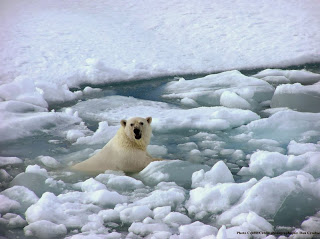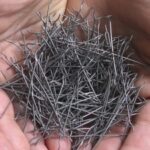“A gradual increase in the overall temperature of the earth’s atmosphere generally attributed to the green house effect caused by increase levels of carbon dioxide, CFCs, and other pollutants”
 |
| global warming |
Global Warming and Climate Change
Concept of greenhouse effect and green house gases
The sun, of course, is the ultimate source of heat energy reaching the Earth, fueling our weather systems, and establishing our major climate zones. There is, however, good evidence that larger variations in the sun\’s activity do occur. For example, during the last half of the 17th century, there was a period of greatly reduced solar activity.
Our atmosphere consists of many gases; some of these gases, such as carbon dioxide and water vapor, naturally absorb long-wave radiation that is emitted from the earth’s surface. Short-wave solar radiation enters the earth’s atmosphere and is absorbed by the earth’s surface. This radiation is then recycled and emitted as long wave terrestrial radiation. Gases such as water vapor and carbon dioxide absorb this radiation, hold it in the atmosphere, and keep the temperature of the earth warmer than it would otherwise be if there wasn’t an atmosphere. This is what meteorologists refer to as the “Natural Greenhouse effect”
How greenhouse gases causes global warming
This natural greenhouse effect has a balance and thus the earth is able to provide such an environment on which life can sustain; however human activities add additional trace gases into the atmosphere that causes problems; these additional trace gases absorb-out going long-wave radiation. These additional trace gases include methane, chlorofloro carbons, nitrous oxide, aerosols, zone,
The result is an increase in the amount of long-wave radiation that is being trapped by the atmosphere. It is believed that this could eventually increase the average overall global temperature.
Carbon dioxide \”…is considered the trace gas of greatest importance because of the substantial increase in its atmospheric concentration as well as its probable continued rise due to global consumption of fossil fuels\”.
Due to these additional trace gases; earth’s mean surface temperature has increased by about 0.8 0 c, with about two-thirds of the increase occurring since 1980.
Like Us on Facebook!
Introduction to climate change
Climate is defined as the analysis of accumulated weather data for long term patterns and trends. Climate change is therefore defined as \”long-term weather patterns and trends becoming different over an extended period of time.\” For example, if the average temperature in Pakistan over the 20th century is significantly higher or lower than the average temperature in Pakistan, over the 19th century, this would be an example of climate change. Thus climate change can be defined as;
Subscribe Us on YouTube!
“a change in global climate patterns apparent from the mid to late 20th century onwards, attributed largely to the increased levels of atmospheric carbon dioxide produced by the use of fossil fuels.”
Global Warming Vs Climate Change
\’global warming\’ and \’climate change\”. In reality, the two terms mean different things, have both been used for decades.
Both of the terms in question are used frequently in the scientific literature, because they refer to two different physical phenomena. As the name suggests, \’global warming\’ refers to the long-term trend of a rising average global temperature, which you can see here:
\’Climate change\’, again as the name suggests, refers to the changes in the global climate which result from the increasing average global temperature. For example, changes in precipitation patterns, increased prevalence of droughts, heat waves, and other extreme weather, etc. These projections of future global precipitation changes from the 2007 IPCC report are an example of climate change.
How climate change and global warming is detected?
In general there are 10 indicators with the help of which we can detect climate change and global warming. There are 7 indicators that would be expected to increase in a warming world and 3 indicators would be expected to decrease;
Causes of Global Warming and Climate Change:
Changes in climate can result from both natural events and human activities. Examples of natural causes of climate change are volcanic eruptions, variations in the earth\’s orbit around the sun, and variations in solar output. Examples of human-induced causes of climate change include industrial pollutants and fossil fuels, warming of average annual temperatures due to urbanization, and changes in the earth\’s albedo due to deforestation of tropical rainforests. Climate change in the context of this paper refers to changes that result from human activities, especially as these changes relate to the issue of global warming. Of special importance is the \”greenhouse gas\” effect which is defined as, \”The trapping of thermal emissions from the earth\’s surface by human-induced greenhouse gases”. If global warming is indeed happening, it is the greenhouse gas effect that is believed to be the most responsible.
Earth’s temperature depends on the balance between energy entering and leaving the planet’s system . When incoming energy from the sun is absorbed by the Earth system, Earth warms. When the sun’s energy is reflected back into space, Earth avoids warming. When energy is released back into space, Earth cools. Many factors, both natural and human, can cause changes in Earth’s energy balance, including:
· Changes in the greenhouse effect, which affects the amount of heat retained by Earth’s atmosphere
· Variations in the sun’s energy reaching Earth
· Changes in the reflectivity of Earth’s atmosphere and surface
Since the Industrial Revolution began around 1750, human activities have contributed substantially to climate change by adding CO2 and other heat-trapping gases to the atmosphere. These greenhouse gas emissions have increased the greenhouse effect and caused Earth’s surface temperature to rise. The primary human activity affecting the amount and rate of climate change is greenhouse gas emissions from the burning of fossil fuels.
Green House Gases, sources, and participation in rising of global weather
The most important Green House Gases directly emitted by humans include CO2, CH4, nitrous oxide (N2O), and several others. The sources and recent trends of these gases are detailed below.
Carbon Di oxide CO2
Carbon dioxide is the primary greenhouse gas that is contributing to recent climate change. CO2 is absorbed and emitted naturally as part of the carbon cycle, through animal and plant respiration, volcanic eruptions, and ocean-atmosphere exchange. Human activities, such as the burning of fossil fuels and changes in land use, release large amounts of carbon to the atmosphere, causing CO2 concentrations in the atmosphere to rise.
Methane
Methane is produced through both natural and human activities. For example, natural wetlands, agricultural activities, and fossil fuel extraction and transport all emit CH4.
Methane is more abundant in Earth’s atmosphere now than at any time in at least the past 650,000 years. Due to human activities, CH4 concentrations increased sharply during most of the 20th century and are now more than two-and-a-half times pre-industrial levels. In recent decades, the rate of increase has slowed considerably.
Nitrous oxide
Nitrous oxide is produced through natural and human activities, mainly through agricultural activities and natural biological processes. Fuel burning and some other processes also create N2O. Concentrations of N2O have risen approximately 18% since the start of the Industrial Revolution, with a relatively rapid increase towards the end of the 20th century. In contrast, the atmospheric concentration of N2O varied only slightly for a period of 11,500 years before the onset of the industrial period, as shown by ice core samples. For more information on N2O emissions and sources, and actions that can reduce emissions,
Water Vapor
Water vapor is the most abundant greenhouse gas and also the most important in terms of its contribution to the natural greenhouse effect, despite having a short atmospheric lifetime. Some human activities can influence local water vapor levels. However, on a global scale, the concentration of water vapor is controlled by temperature, which influences overall rates of evaporation and precipitation. Therefore, the global concentration of water vapor is not substantially affected by direct human emissions.
Ozone
Tropospheric ozone (O3), which also has a short atmospheric lifetime, is a potent greenhouse gas. Chemical reactions create ozone from emissions of nitrogen oxides and volatile organic compounds from automobiles, power plants, and other industrial and commercial sources in the presence of sunlight. In addition to trapping heat, ozone is a pollutant that can cause respiratory health problems and damage crops and ecosystems.
Chlorofluorocarbons (CFCs)
Chlorofluorocarbons (CFCs), hydrochlorofluorocarbons (HCFCs), hydrofluorocarbons (HFCs), perfluorocarbons (PFCs), and sulfur hexafluoride (SF6), together called F-gases, are often used in coolants, foaming agents, fire extinguishers, solvents, pesticides, and aerosol propellants. Unlike water vapor and ozone, these F-gases have a long atmospheric lifetime, and some of these emissions will affect the climate for many decades or centuries.
Change in Reflectivity characteristic of atmosphere due to human activities
Human changes in land use and land cover have changed Earth’s reflectivity. Processes such as deforestation, reforestation, desertification, and urbanization often contribute to changes in climate in the places they occur. These effects may be significant regionally, but are smaller when averaged over the entire globe. In addition, human activities have generally increased the number of aerosol particles in the atmosphere. Overall, human-generated aerosols have a net cooling effect offsetting about one-third of the total warming effect associated with human greenhouse gas emissions. Reductions in overall aerosol emissions can therefore lead to more warming. However, targeted reductions in black carbon emissions can reduce warming.
Impact or effects of global warming and climate change
Our lives are connected to the climate. Human societies have adapted to the relatively stable climate we have enjoyed since the last ice age which ended several thousand years ago. A warming climate will bring changes that can affect our water supplies, agriculture, power and transportation systems, the natural environment, and even our own health and safety. Carbon dioxide can stay in the atmosphere for nearly a century, so Earth will continue to warm in the coming decades. The warmer it gets, the greater the risk for more severe changes to the climate and Earth\’s system. Although it\’s difficult to predict the exact impacts of climate change, what\’s clear is that the climate we are accustomed to is no longer a reliable guide for what to expect in the future.
Effects of global warming and climate change can be observed in the following fields;
Agriculture
Agriculture and fisheries are highly dependent on specific climate conditions. Trying to understand the overall effect of climate change on our food supply can be difficult. Increases in temperature and carbon dioxide (CO2) can be beneficial for some crops in some places. But to realize these benefits, nutrient levels, soil moisture, water availability, and other conditions must also be met. Changes in the frequency and severity of droughts and floods could pose challenges for farmers and ranchers. Meanwhile, warmer water temperatures are likely to cause the habitat ranges of many fish and shellfish species to shift, which could disrupt ecosystems. Overall, climate change could make it more difficult to grow crops, raise animals, and catch fish in the same ways and same places as we have done in the past. The effects of climate change also need to be considered along with other evolving factors that affect agricultural production, such as changes in farming practices and technology.
Coasts
Climate change could affect coastal areas in a variety of ways. Coasts are sensitive to sea level rise, changes in the frequency and intensity of storms, increases in precipitation, and warmer ocean temperatures. In addition, rising atmospheric concentrations of carbon dioxide (CO2) are causing the oceans to absorb more of the gas and become more acidic. This rising acidity could have significant impacts on coastal and marine ecosystems.
The impacts of climate change are likely to worsen many problems that coastal areas already face. Shoreline erosion, coastal flooding, and water pollution affect man-made infrastructure and coastal ecosystems. Confronting existing challenges is already a concern. Addressing the additional stress of climate change may require new approaches to managing land, water, waste, and ecosystems.
Ecosystems
Climate is an important environmental influence on ecosystems. Climate changes and the impacts of climate change affect ecosystems in a variety of ways. For instance, warming could force species to migrate to higher latitudes or higher elevations where temperatures are more conducive to their survival. Similarly, as sea level rises, saltwater intrusion into a freshwater system may force some key species to relocate or die, thus removing predators or prey that were critical in the existing food chain.
Energy
Energy plays an important role in many aspects of our lives. For example, we use electricity for lighting and cooling. We use fuel for transportation, heating, and cooking. Our energy production and use is interconnected with many other aspects of modern life, such as water consumption, use of goods and services, transportation, economic growth, land use, and population growth. Our production and use of energy (most of which comes from fossil fuels) also contributes to climate change.
Forests
Climate changes directly and indirectly affect the growth and productivity of forests: directly due to changes in atmospheric carbon dioxide and climate and indirectly through complex interactions in forest ecosystems. Climate also affects the frequency and severity of many forest disturbances.
In conjunction with the projected impacts of climate change, forests face impacts from land development, suppression of natural periodic forest fires, and air pollution. Although it is difficult to separate the effects of these different factors, the combined impact is already leading to changes in our forests. As these changes are likely to continue in the decades ahead, some of the valuable goods and services provided by forests may be compromised.
Human Health
Weather and climate play a significant role in people\’s health. Changes in climate affect the average weather conditions that we are accustomed to. Warmer average temperatures will likely lead to hotter days and more frequent and longer heat waves. This could increase the number of heat-related illnesses and deaths. Increases in the frequency or severity of extreme weather events such as storms could increase the risk of dangerous flooding, high winds, and other direct threats to people and property. Warmer temperatures could increase the concentrations of unhealthy air and water pollutants. Changes in temperature, precipitation patterns, and extreme events could enhance the spread of some diseases.
Water Resources and glaciers
Water resources are important to both society and ecosystems. We depend on a reliable, clean supply of drinking water to sustain our health. We also need water for agriculture, energy production, navigation, recreation, and manufacturing.
Many of these uses put pressure on water resources, stresses that are likely to be exacerbated by climate change. In many areas, climate change is likely to increase water demand while shrinking water supplies. This shifting balance would challenge water managers to simultaneously meet the needs of growing communities, sensitive ecosystems, farmers, ranchers, energy producers, and manufacturers.
In some areas, water shortages will be less of a problem than increases in runoff, flooding, or sea level rise. These effects can reduce the quality of water and can damage the infrastructure that we use to transport and deliver water.
Effect of Global Warming in Pakistan
Change of Raining Pattern
Global warming and climate change has a significant effect on raining pattern. Monsoon Rains in Pakistan is the major rainfall season in Pakistan which has been adversely effected by the climate change, the moon soon season has not only shifted but the intensity of rainfall and area or region has also changed, last year 1400 died in floods, 13,000,000 people displaced.
Melting of Glaciers in Northern Areas in Pakistan
Due to the climate change and global warming, there is an overall increase in the climate of northern areas of Pakistan, this causes an increase in the rate with which glaciers melt; this reduces the Ice Reserves for our home country.Melting of glaciers not only causes floods but also causes agricultural losses, water shortages, massive droughts and food shortages.
Increase of Temperature
In the major cities of Pakistan like Karachi, Islamabad, Rawalpindi, significant increase of temperature and climate can be observed; as shown by the following graph of mean temperature trend;
Effect on Ecosystem, Human Health and Marine Life;
There is a widespread adverse health effects due to extreme weather conditions. Several loss of marine life due to reduction in mangrove forests
One of very significant effect as observed in Pakistan is the formation of artificial Attabad Lake in Baltistan due to severe land sliding and snow storm.
According to IPCC(Intergovernmental Panel on Climate Change)study for countries most at risk from climate related threats, Pakistan is rated :
• 7th in flood,
• 12th in agriculture.
INCOMMING SEARCH TERMS
Global warming and climate change, global warming and climate change pdf, global warming and climate change ppt, global warming and climate change differences, global warming and climate change differences, global warming and climate change facts, global warming and climate change essay, global warming and climate change for kids, global warming and climate change would most adversely affect, global warming and climate change articles.


















